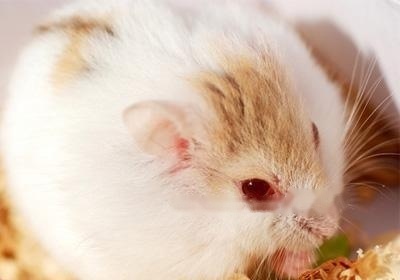
Amber Hamster
Length: 10-12cm
English name:Siberian jerboa, Jerboa
Origin: in northern China
Five-toed Jerboa (scientific name: Allactaga sibirica) is an animal of the genus Jerboidae. Distributed in Mongolia, Turkmenistan, Kazakhstan and Heilongjiang, Qinghai, Inner Mongolia, Gansu, Hebei, Shaanxi, Shanxi, Ningxia, Liaoning, Jilin, Xinjiang, Henan and other places in mainland China, mainly living in grasslands and semi-deserts. The type origin of this species is near Hulun Pool, Mongolia.
Chinese name: Jerboa
Latin name: Allactaga sibirica
Alternative names: Siberian jerboa, jump free, donkey jump, hard jump Children
Kingdom: Animalia
Class: Mammalia
Order: Rodents
Family: Jerboidae
Distribution area: in northern China
English name: Mongolian five-toed Jerboa
Host: field crops, grasses and vegetables, etc.
Natural enemies: Cats, owls and snakes etc.
The body is large, about 140mm long, and the ear length is almost equal to the full length of the skull. The hind limbs are long, about 3-4 times as long as the forelimbs, the forelimbs are slender, the tail length is 1.5 times the body length, the tail has a hairy spike, the upper part of the hairy spike is black, and the end is white. Hind foot 5 toes, the 1st and 5th toes degenerate, the toe ends do not reach the base of the other 3 toes. The back hair and head are gray-brown, the abdomen and the inside of the limbs are pure white, the snout is slender, the interparietal bones are broad, and there is no obvious standoff. The upper incisors are smooth without grooves, the premolars are 1, cylindrical, and the lower incisors have extremely long roots.
Mainly inhabit arid semi-desert areas and dry grasslands, and occasionally in desert areas. It can also be seen around cemeteries, deserted beaches and cultivated fields. The cave has two openings, one is hidden and the other is often open. The diameter of the opening is 50-60mm, the length of the hole is 75-150cm, and the tunnel is almost horizontal. Nests and storerooms. Nocturnal activity, 8-10 pm is the peak period of activity. Begin to prepare for hibernation in late August, enter hibernation in late September, hibernate in early October, and emerge from stinging in April of the following year, and mid-April is the peak period for stinging. The gestation period is 30 days, and one child per year is produced, with 2-6 cubs per litter, with a maximum of 8 cubs.